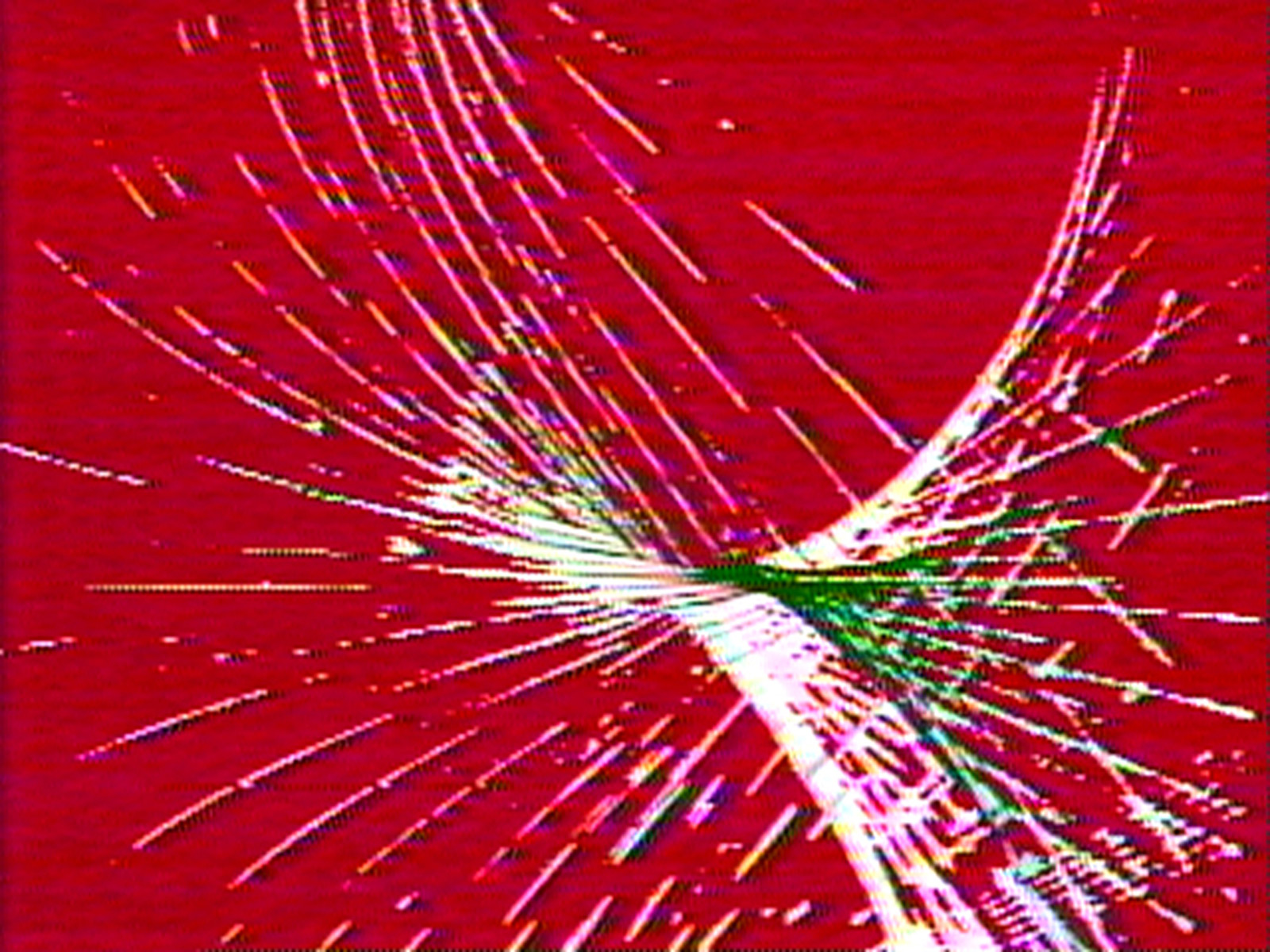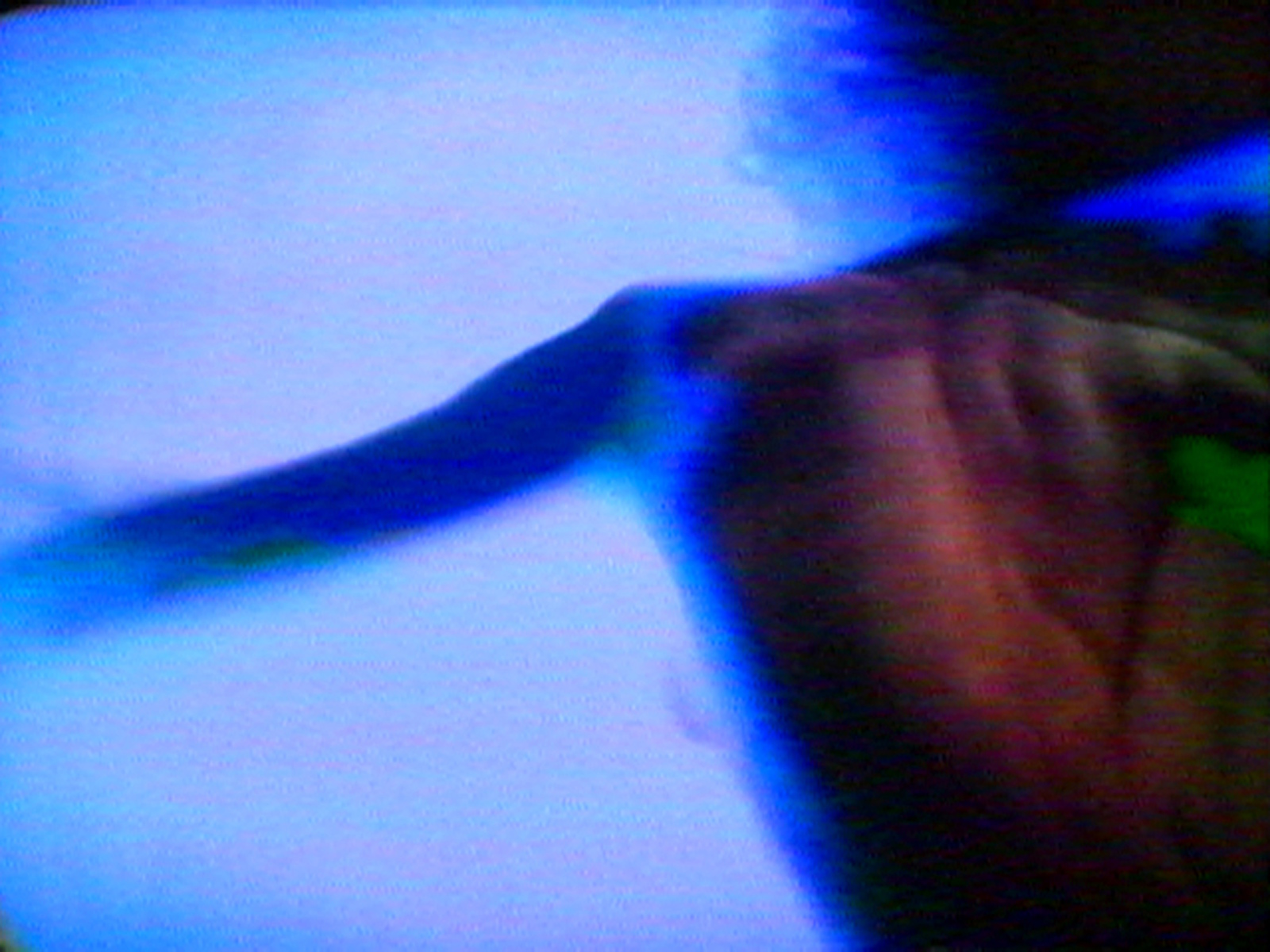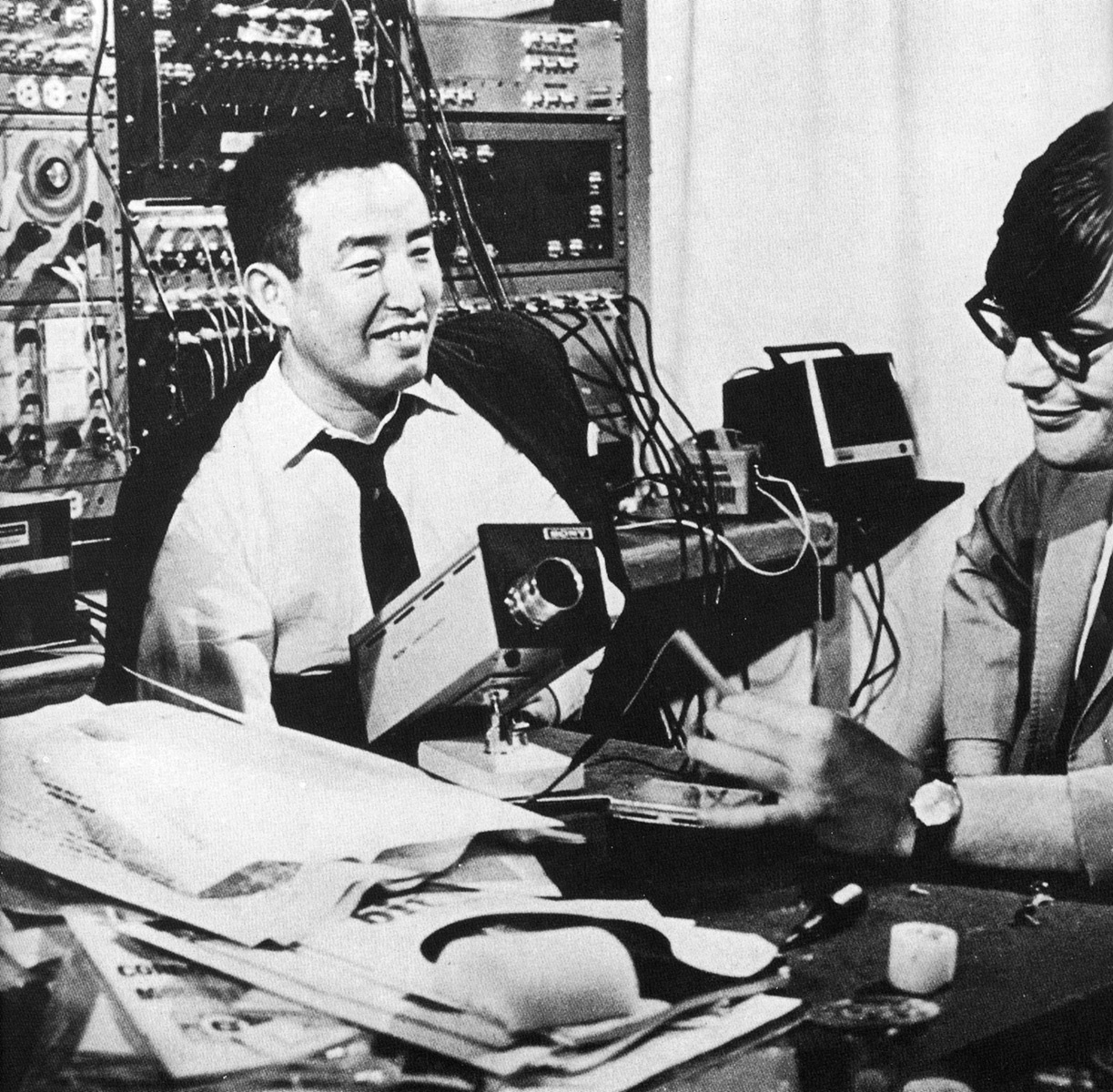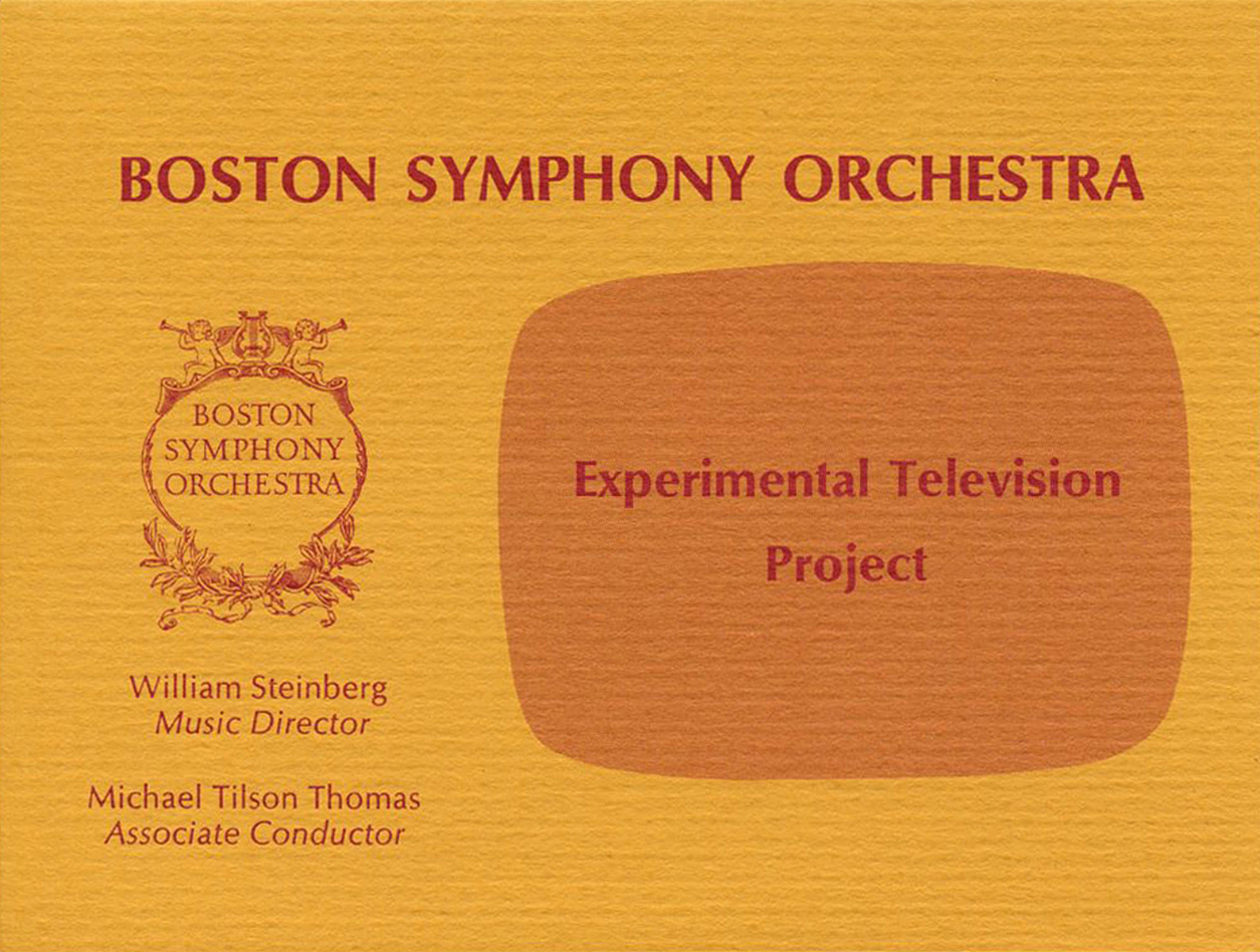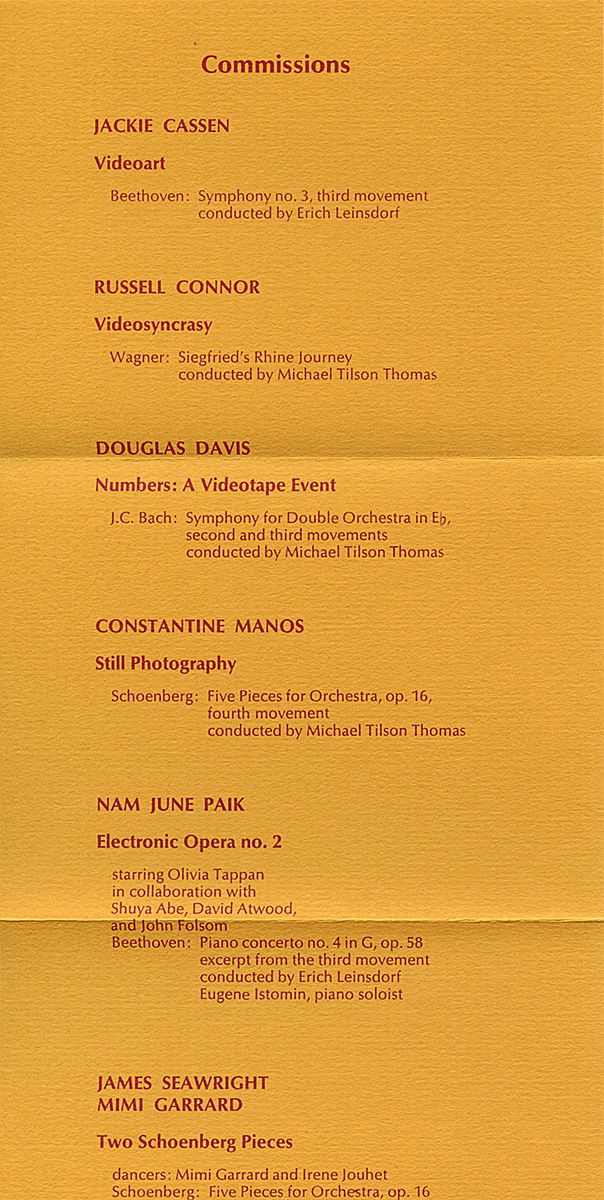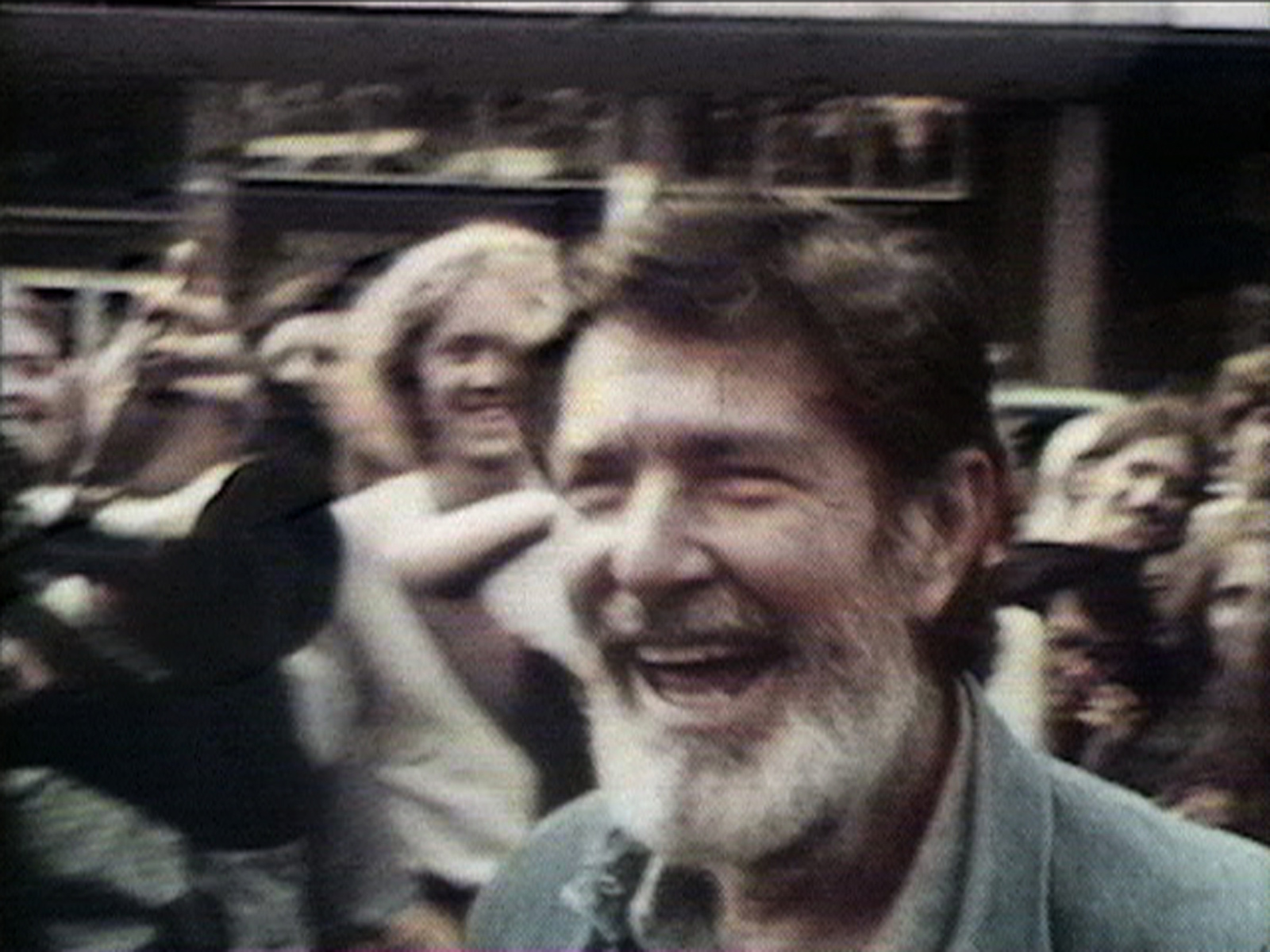Boston-area residents who turned on their television sets on March 23, 1969, were met with an unusual sight: neon loops expanding and contracting like a Slinky, ghostly images of long-haired teenagers and a scantily clad dancer drifting across the screen, and the face of Richard Nixon slowly morphing into a spinning whirlpool—all against a soundtrack of classical music.
A male voice relayed instructions: “Close your eyes,” “Open your eyes,” “Three-quarter close your eyes,” and finally, “Turn off your television set.”
Those viewers were watching the debut of Electronic Opera #1, the first work made for broadcast television by artist Nam June Paik. Part of a program of artist’s shorts called The Medium Is the Medium, the piece aired on the local public television station WGBH. Today, Paik is best remembered as a pioneer of video art, whose frenetic, collage-like language left a lasting mark on our visual culture. Less well known is the work he created in the Boston area. This fascinating stage of Paik’s career is explored in our exhibition Nam June Paik: Screen Play, on view from June 30 through August 5, 2018.
Paik Comes to WGBH
Paik’s path to Boston was circuitous. The artist was born in Korea, lived in Japan and Germany, and settled in New York City in 1964. There, he exhibited with Howard Wise, a gallerist specializing in technology-based art. In the late 1960s, Wise met producers from the Ford Foundation’s Public Broadcasting Laboratory, who were eager to enlist artists to collaborate with public television. The group selected six artists, among them Paik, to participate in a pilot program and found an ideal partner in WGBH, a station with a growing reputation as a hub for experimental television. In Boston, Paik created Electronic Opera #1, which involved recording from television screens that he had rewired or modified with magnets to distort the images.

